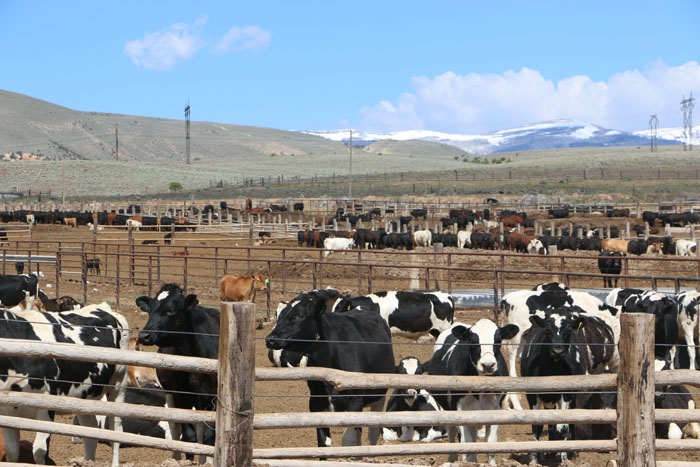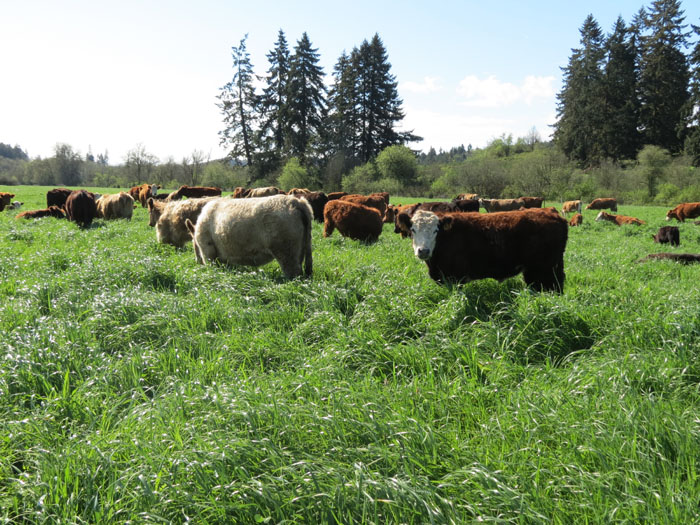
We recently took a close look at the farms in Sevier County. There are some massive, football field sized warehouses housing thousands of chickens. You don’t see the chickens. There are acres of alfalfa pastures watered automatically—no animals. Across the street there is a very smelly feedlot where cows are standing atop piles of their own manure while putting on massive pounds from enriched corn silage.
Around the feedlots and factory farms the smell is terrible. It’s caused by an excess of nitrogen from the manure and phosphorous from their urine. Without grass or organic matter to absorb the waste, it stinks. If these cows were moved to the pastures across the street there would be no smell. Should we criticize these farmers? Absolutely not. Everything we see at these farms is a product of consumer deman. We demand $3 per pound ground beef. This is what that looks like: cows are given regimens of growth hormones and antibiotics to fatten up on average 3 pounds a day until they are slaughtered. Chickens’ beaks are cut off and they are placed in small cages their entire 5-month life, in order to supply our deman of $4 per pound chicken breast.
Rural areas are a reflection of City-dweller’s values These are our values on display. These farmers are doing what is necessary to survive and provide what we want.
But the good news is that consumer consciousness is beginning to evolve. Pasture-raised beef and consumer support of local farms, make rural areas into retreats from our crowded cities and polluted air. Examine our story on Boulder, Utah and we begin to see what a rural area could look like, if we were more connected with where our food comes from. Everyone should visit a feedlot, because each of us will consume around 80 pounds of beef this year.
Corn-fattened beef claims 97% of the market. Pasture-finished beef has just 3% of the market. Pasture-raised beef is far healthier because the cows are far healthier (you can see this for yourself). More folks are cutting down their meat consumption to afford pasture-raised beef.
Every year, the demand for pasture-raised increases by 100%. Rural Utah farmers would love to provide more pasture-raised beef, chicken, and pork, but we need to increase our demand. We will never justify the cost unless we try it for ourselves. This issue, and the three videos we have produced to accompany it, are to demonstrate what we can do for farmers if we make better food choices.
For our fourth annual farm issue, we decided to get away from our common theme of suburban sprawl and disappearing farms. Instead, we have decided to examine farms that are not selling, but that are holding in place the pieces of a lasting legacy. We examine farms that have recently started, or farms that aren’t going anywhere…yet. The theme they have in common is permaculture. Especially exciting are the farms that are reclaiming city turf.
Joel Salatin is the famous Swoop, Virginia farmer from Food Inc. He proffers the question to a group of visitors at his amazing pasture-raised Polyface Farm: What is it that makes a farm a farm? (Hint: it’s not a barn, it’s not wavy fields of grain, it’s not even corn or cows or chickens.) The answer: A farmer. And farmers can exist anywhere.



